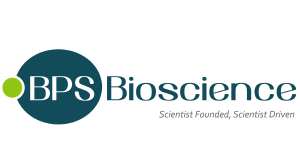MAGE-A4 TCR-T Cells
Application: Positive control in MAGE-A4 TCR-T cell development.Screen modulators of MAGE-A4 TCR-T cell-driven cytotoxicity.Design and optimize co-culture bioassays for MAGE-A4-specific TCR-T cell evaluation.
Background:
MAGE (melanoma associated antigen) proteins are CT (cancer testis) antigens, and there are about 60 proteins in the MAGE family that can be subdivided into type I (present only on the X-chromosome, MAGE-A, B and C) and type II (MAGE D-L and necdin). Under normal conditions they are mostly found in the testis and placenta. They are found at high levels in several cancer types, such as melanoma, brain, and breast cancer, and are involved in the development of resistance to chemotherapy, cell motility and cell survival. Expression of MAGE proteins tend to correlate with a poor prognosis. They are intracellular proteins, with MAGE-A4 being found in the cytosol and nucleus, making them poor targets for strategies such as CAR-T cell therapy. MAGE proteins are degraded in the proteosome, and the peptides created can then be found on the cell membrane in combination with MHC (major histocompatibility complex) I. The presentation on the cell surface in this form makes them an attractive target for TCR (T cell receptor)-T cell therapy. In 2024, the first MAGE-A4 TCR engineered cell therapy for advanced synovial sarcoma was approved by the Food and Drug Administration (FDA).
Description: The MAGE-A4 TCR-T Cells are generated by high-titer lentiviral transduction of human primary CD4+ and CD8+ T cells with MAGE-A4-Specific TCR Lentivirus (#78935). These ready-to-use TCR (T cell receptor)-T cells express the human TCR that specifically recognizes antigen MAGE-A4 (Melanoma-associated antigen 4).These TCR-T cells have been validated by flow cytometry (to determine the TCR expression) and co-culture (IFN-γ staining and degranulation).
Mycoplasma Testing: The cells have been screened to confirm the absence of Mycoplasma species.
Storage Stability: Cells are shipped in dry ice and should immediately be thawed or stored in liquid nitrogen upon receipt. Do not use a -80°C freezer for long term storage.
Uniprot: P43358
Warnings: Donors have been screened and determined negative for:Hepatitis B (anti-HBc EIA, HBsAg EIA)Hepatitis C (anti-HCV EIA)Human Immunodeficiency Virus (HIV-1/HIV-2 plus O)Human T-Lymphotropic Virus (HTLV-I/II)HIV-1/HCV/HBVWest Nile VirusTrypanasoma cruziNote: Testing cannot guarantee that any sample is completely virus-free. These cells should be treated as potentially infectious and appropriate biological safety level 2 (BSL-2) precautions should be used.
Biosafety Level: BSL-1
References: Kropp KN., et al., 2020 PLOS One 15(9): e0238875.Caballero, O L.., et al., 2009 Cancer Sci. 100, 2014–2021.Sanderson, J. P. et al., 2020 Oncoimmunology 9, 1682381.
| SKU | BPS82390 |
|---|---|
| Manufacturer | BPS Bioscience |
| Manufacturer SKU | 82390 |
| Package Unit | 1 vial |
| Quantity Unit | STK |
| Product information (PDF) | Download |
| MSDS (PDF) |
|

 Deutsch
Deutsch






